
Graphing energy versus position for a block accelerated by a spring and stopped by friction.
- Subject:
- Physical Science
- Physics
- Material Type:
- Lesson
- Provider:
- Khan Academy
- Provider Set:
- Khan Academy
- Author:
- Sal Khan
- Date Added:
- 04/12/2016

Graphing energy versus position for a block accelerated by a spring and stopped by friction.
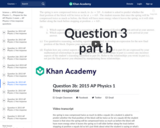
How doubling spring compression impacts stopping distance.
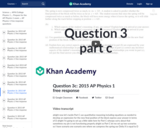
Analytically analyzing how doubling spring compression impacts stopping distance.
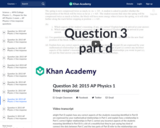
More analytically analyzing how doubling spring compression impacts stopping distance.
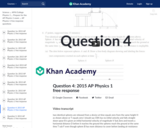
Identical spheres falling from the same height with different horizontal velocities.
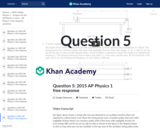
Fundamental frequencies (first harmonics) of strings.
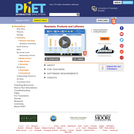
Create your own sandwich and then see how many sandwiches you can make with different amounts of ingredients. Do the same with chemical reactions. See how many products you can make with different amounts of reactants. Play a game to test your understanding of reactants, products and leftovers. Can you get a perfect score on each level?
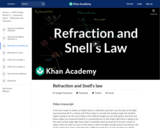
An introduction to Refraction and Snell's Law. Created by Sal Khan.
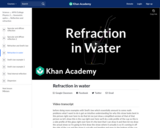
An introduction to Refraction in Water. Created by Sal Khan.

Students write a short essay using relative age principles to describe a fictional set of geologic events and processes (specified in the exercise) that occur in a hypothetical area. The essay is used to develop a geologic profile, and then it is given to another student who is tasked with producing the correct geologic profile (as a quiz), based on the essay information. A teacher-designed rubric is used to score the quiz and to allow students to complete a self-evaluation of their learning.
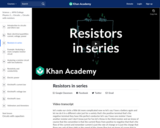
Resistors that come one after another. Created by Sal Khan.

Featuring slow-motion footage of insects in flight, this video adapted from NOVA explores the engineering challenge of designing a robotic aerial vehicle that flies like a bug.

In this exercise, sudents write a series of three stories that explain and/or illustrate rock-forming processes. As an alternative, they may write a single story that addresses the rock cycle. Describing these processes at a level appropriate for their target audience (second graders) requires an adequate understanding of the geologic processes involved and can reveal problems or misconceptions in the students' ideas of how rocks are formed. Teacher's notes and rubrics for teacher and peer review are provided.

In this exercise, students use U.S. Geological Survey and other websites to learn about the history of earthquakes in New York. Through their web research, they will learn what earthquakes are, how and where they occur, and the types of hazards associated with large quakes. They are encouraged to write a report summarizing their results.

This interactive resource adapted from the National Park Service profiles rocky coast environments and describes how various geologic features form.

In this video adapted from the Encyclopedia of Physics Demonstrations, learn how plotting the changes in an object's position on a graph can provide information about the object's motion.

Learn about rotational forces by watching astronaut Jeffrey Williams spin objects onboard the International Space Station in this interactive activity adapted from NASA.

In this group activity, learners use some common objects and work together to simulate the Coriolis effect. During the challenge, learners make predictions and test different scenarios. This resource includes background information about the Coriolis effect and helpful hints.
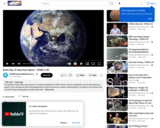
In this webcast we look at the beginnings of Earth Day and how a better understanding of our place in the universe has evolved through photographic scientific discoveries

This fast-paced webcast will look at how hot air balloons float and how a change in air pressure affects them.